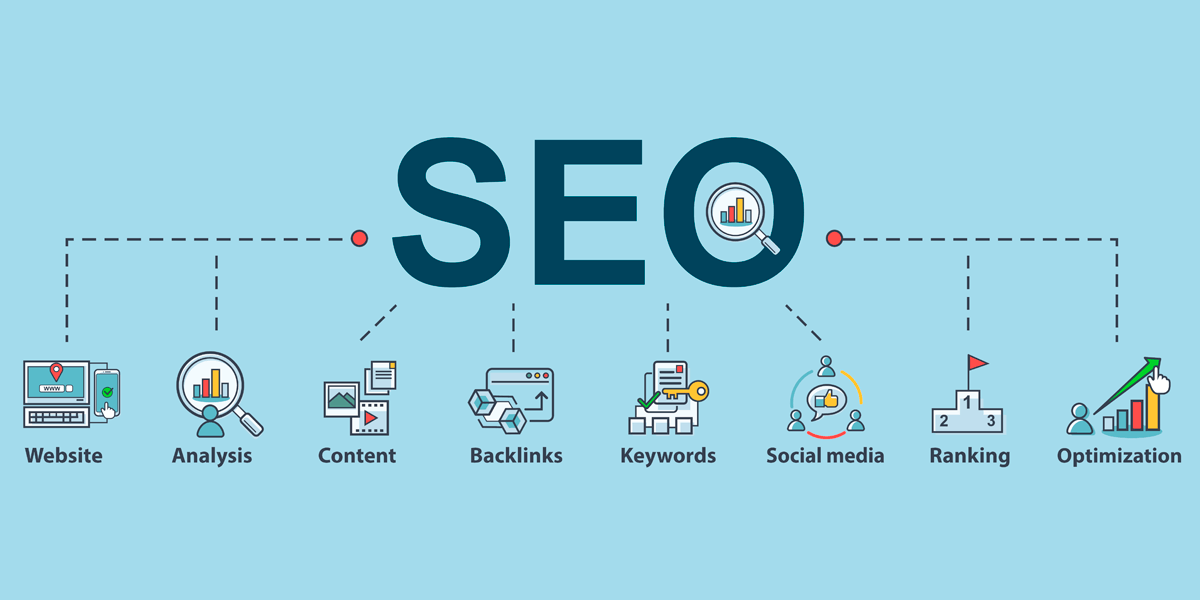Understanding the Duty of User Experience in Modern Search Engine Optimization Practices
In an era where electronic visibility can make or break an organization, understanding the intersection between customer experience (UX) and modern search engine optimization techniques is more essential than ever. As search engines progress, they increasingly focus on internet sites that supply seamless, engaging experiences to customers. Aspects such as website speed, mobile-friendliness, and intuitive navigating are no longer plain improvements; they are critical to search engine optimization success. How do these aspects exactly affect search rankings? And exactly how can organizations guarantee their electronic content not just fulfills yet exceeds progressing expectations? These inquiries form the backbone of a crucial conversation.
The Development of SEO
Over the years, the landscape of seo (SEARCH ENGINE OPTIMIZATION) has actually undergone significant transformation, mirroring the dynamic nature of digital innovation and user behavior. SEO was mainly concerning keyword stuffing and link-building approaches, focusing greatly on adjusting search engine formulas to boost web site rankings. As search engines became extra innovative, these tactics started to lose effectiveness and importance.

Additionally, mobile optimization and voice search have actually come to be indispensable components of SEO techniques. With the spreading of mobile phones, making certain internet sites are mobile-friendly has actually ended up being a need. Voice search, driven by digital aides like Siri and Alexa, has actually even more shifted SEO practices towards natural language handling and conversational material.
Essentially, the advancement of search engine optimization shows a broader pattern in the direction of enhancing customer fulfillment by aligning digital material with the nuanced expectations of contemporary customers.
Key UX Aspects in Search Engine Optimization
In the realm of search engine optimization, vital user experience (UX) components are important for improving both individual contentment and search engine positions. Web sites enhanced for mobile usage not just cultivate a seamless user experience but also straighten with Google's mobile-first indexing strategy.
Clear call-to-action (CTA) buttons direct users towards preferred activities, improving conversion rates. Ease of access can not be overlooked; guaranteeing that material is easily accessible to customers with handicaps widens reach and complies with web standards. Integrating these UX elements effectively supports SEO efforts by promoting individual retention and helping with search engine understanding of site content.
Impact of Website Rate
While frequently underestimated, the influence of website rate on user experience and SEO can not be overemphasized. A slow-loading website can lead to enhanced bounce prices, as here individuals are most likely to abandon a site if it takes more than a few secs to tons.
Moreover, site rate directly influences conversion rates and individual fulfillment. Study suggests that also a one-second hold-up in page lots time can cause substantial reductions in customer satisfaction and conversion chance. This emphasizes the need for businesses to prioritize site rate optimization as part of their search engine optimization method. Reliable steps include maximizing images, leveraging web browser caching, and reducing HTTP requests. By addressing these technical elements, internet sites can improve their speed, consequently boosting customer experience and boosting their search engine optimization efficiency. Ultimately, purchasing site rate is spending in both customer satisfaction and online search engine presence, important components in the electronic marketplace.
Mobile-Friendliness Significance
Adapting to mobile-friendliness has become an indispensable component of effective search engine optimization methods. As mobile tools progressively control web usage, search engines like Google have actually changed in the direction of mobile-first indexing, indicating the mobile version of a site is prioritized in ranking algorithms (seo adelaide). Mobile-friendliness is not just a pattern but a necessity in maximizing a website's internet search engine efficiency

As customers commonly look for local details on-the-go, having a mobile-optimized website boosts visibility in regional search outcomes, driving foot website traffic and conversions for organizations. Sites that fall short to prioritize mobile-friendliness danger losing out on important website traffic, as users are less most likely to engage with sites that are challenging to navigate on their mobile devices.
Enhancing Navigation for Search Engine Optimization
As businesses recognize the requirement of mobile-friendliness in SEO, an additional pivotal aspect emerges: improving navigating - seo adelaide. Reliable navigation is vital as it directly affects customer experience (UX), which internet search engine increasingly prioritize. A well-structured web site makes certain that customers can conveniently find the content they are trying to find, minimizing bounce prices and enhancing dwell time, both of which are essential search engine optimization metrics
To boost navigating, web sites should embrace a rational pecking order that guides users perfectly through content. This consists of clear, succinct menu labels and an click for more intuitive layout, which jointly simplify the user journey. Employing breadcrumb routes can additionally help individuals in comprehending their place within a web site, promoting a sense of orientation and control.
Along with assisting UX, streamlined navigating enables search engine spiders to index material much more efficiently, enhancing visibility in search results page. Carrying out internal connecting strategies can also boost SEO by distributing web page authority and promoting material discoverability. Ensuring navigating is responsive across devices guarantees that individuals take pleasure in a consistent experience, essential in today's multi-device globe. Inevitably, enhancing navigation is not just regarding visual appeals; it is a strategic technique to optimizing both individual involvement and search engine performance.
Conclusion
Integrating user experience right into modern-day SEO practices is paramount for maximizing search engine positions and boosting internet site efficiency. As search engines prioritize user intent, vital elements such as website rate, mobile-friendliness, and intuitive navigating play a crucial function in conference individual expectations.
In the realm of search engine optimization, key customer experience (UX) elements are crucial for boosting both customer satisfaction and search engine positions. Integrating these UX components efficiently supports SEO initiatives by promoting user retention and assisting in search engine understanding of website web content.
As individuals frequently search for regional information on-the-go, having a mobile-optimized website enhances visibility in neighborhood search results, driving foot website traffic and conversions for companies.Including individual experience into contemporary Search engine optimization practices is extremely important for maximizing search engine rankings and improving site efficiency. As search engines focus on user intent, vital components such as site rate, mobile-friendliness, and instinctive navigating play an essential role in meeting individual expectations.